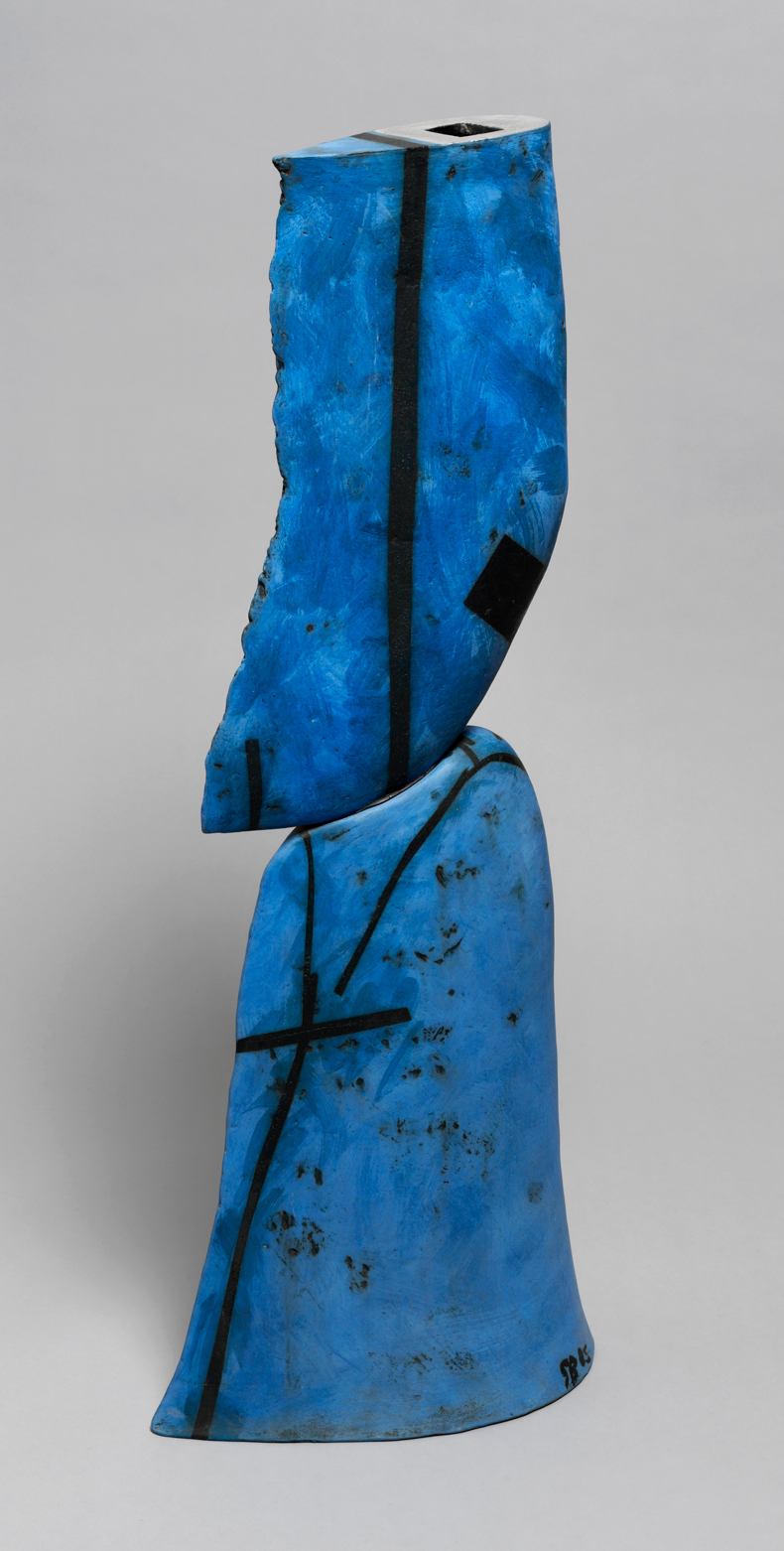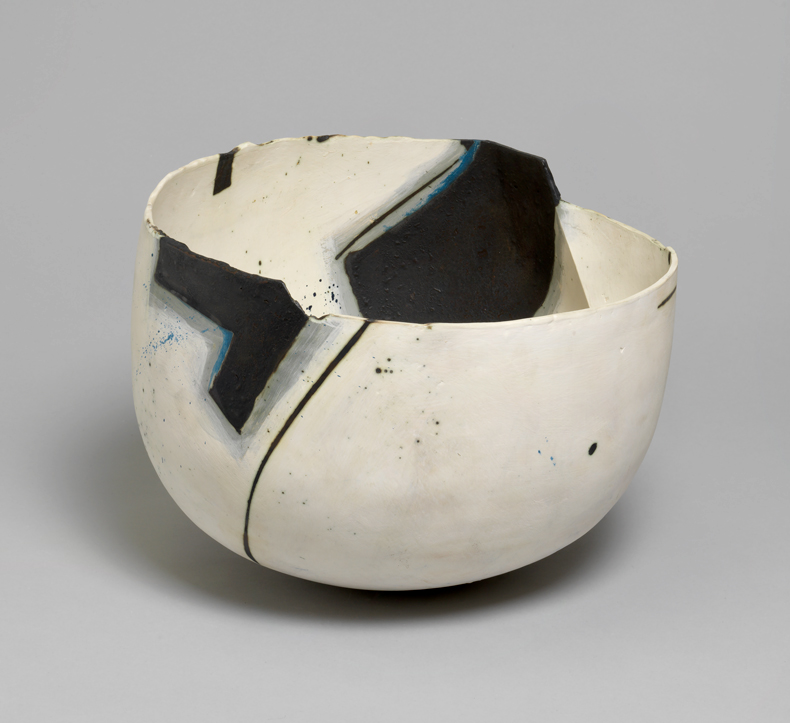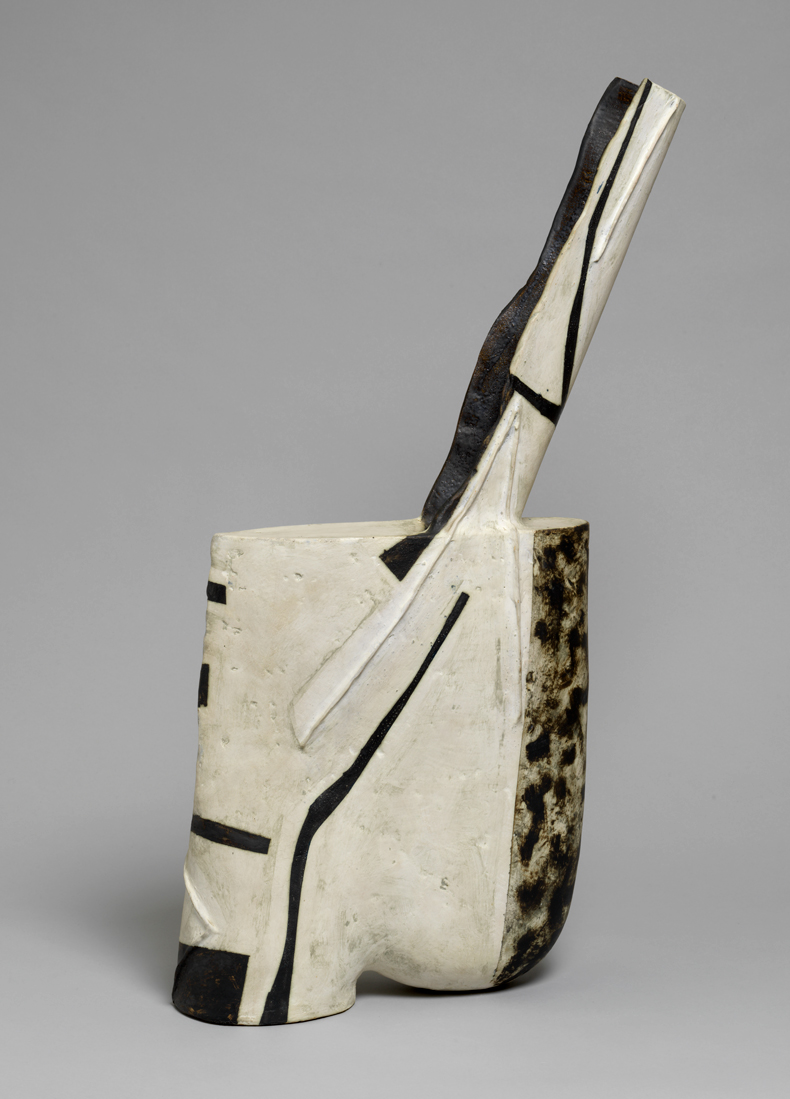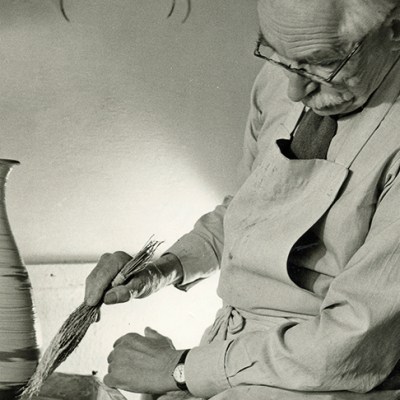
In the early 1960s, the artist Gordon Baldwin, who died last month at the age of 93, was approached by the Mayfair gallerists McRoberts & Tunnard. They had seen black-and-white images of his arresting sculptures and wanted to know what they were made from. On being told the material was clay, one of them reportedly said, ‘Oh my god, they’re pots! Now, we’re interested in your work but you’ll have to have it cast into bronze.’
Today Baldwin is properly recognised as a major figure in British modernism. His ceramic sculptures, noted for their formal experimentalism and marked, painted surfaces, are acknowledged alongside the work of his teachers William Turnbull and Eduardo Paolozzi, his elders Hans Coper and Lucie Rie and younger sculptors such as Anish Kapoor and Rachel Whiteread. Setting out to become a painter, but with a parallel ambition to be a poet, Baldwin found in clay, and above all in the vessel, a primary medium for the expression of what he called, after Gerard Manley Hopkins, ‘the inscape’: the hidden, complex, irreducible essence of a moment, a person, a thing. As well as crafting a distinctive, ever-evolving oeuvre (he continued to make work until the mid 2010s), Baldwin made a significant contribution to countless artists’ lives through his teaching at Central School of Art and Design – and at Eton College, where he taught ceramics and sculpture. There, for 39 years, he offered both inspiration and refuge. The artist Edward Hutchison, a former pupil, recalls in the recent monograph Gordon Baldwin: Inscape: ‘In as much as a water diviner is able to reveal a hidden underground source of power and energy, so Gordon Baldwin possessed a mastery to discover and nurture the latent talents and skills of teenagers […] it is no exaggeration to say that some very fine architects, designers, ceramicists and dancers owe their success to his unique way of teaching.’
Tall Standing Form (1985), Gordon Baldwin. Courtesy Corvi-Mora

Baldwin was born in Lincoln in 1932. He attended the local art school, choosing painting as his primary focus with pottery as the craft option. His pottery teacher Bob Blatherwick introduced him to the slipware of the 17th-century potter Thomas Toft and the ceramics of Picasso, enabling him to see ceramics as a discipline that reached far into the past while also serving contemporary artists. Baldwin seized the opportunity for further study in London, enrolling in industrial ceramics at the Central School of Arts and Crafts, as it was then called, in 1951. There the head of ceramics, Dora Billington, encouraged her students to take an experimental approach to their medium and to look beyond the narrow boundaries of Bernard Leach’s ‘anglo-oriental’ philosophy for inspiration.
Leach, with his admiration for Song dynasty bowls and English slipware, had reached new heights of influence after the publication of his classic A Potter’s Book in 1940. Baldwin, however, drew equally from the teachings of Turnbull and Paolozzi and of ceramics tutors such as the New Zealand émigré William Newland, a leading figure in the Bayswater Group, whose members Leach disparagingly dubbed ‘the Picassoettes’ for their lively tin-glazed, slip-trailed earthenware. Meanwhile, two other strands in contemporary ceramics were coming together in London: the studio pottery of William Staite Murray, who exhibited his sinuous, elegant vessels alongside Henry Moore and Ben Nicholson, and the sophisticated sculptural ceramics of Rie and Coper, who had been born and brought up in Austria and Germany respectively. These developments counterbalanced the dogma of artisanal anonymity, function and repetition propounded by Leach.
Painting in the Form of a Bowl (1986), Gordon Baldwin. Courtesy Corvi-Mora

From all this Baldwin crafted his unique art. Decidedly modernist in his approach to material, form and mark-making, and intuitive in construction, he was always open to exploring new ideas and to the world around him – clouds, mountains, stones on a northern Welsh beach. He was consistently committed to the expressive potential of the vessel, as is clear from his Developed Bottles, his Paintings in the Form of a Bowl or a Dish, or his monumental boulder-like vessels, with their pierced, painted or scored sides and small openings. In his hands clay became a skin that enveloped a powerful, outward-pushing interior while also being alive to the ever-changing exterior space in which the vessel found its home. Like landscape, his objects seem to breathe. He wrote: ‘They grow of shimmers and whispers in the quiet studio amongst the darkness and the silences and the space between the work already done.’
In 1992 Baldwin was awarded an OBE in recognition of his influence and achievements, and in 2000 he received an honorary doctorate from the Royal College of Art in London. In 2008 Ruthin Arts Centre organised an exhibition of pieces that he had made in collaboration with his wife, the painter Nancy Baldwin, whom he had met while at the Lincoln School of Art in the 1940s; in 2012, York Art Gallery mounted the exhibition ‘Gordon Baldwin: Objects for a Landscape’ to coincide with his 80th birthday – a show that also celebrated the permanent loan of Anthony Shaw’s collection to the museum, which included the single largest collection of Baldwin’s work. Always seeking ‘forms which have a certain awkward resonance’, Baldwin was instrumental in making the ceramic vessel a medium for modern art, opening the door for others.
Long Spout (1988), Gordon Baldwin. Courtesy Corvi-Mora



